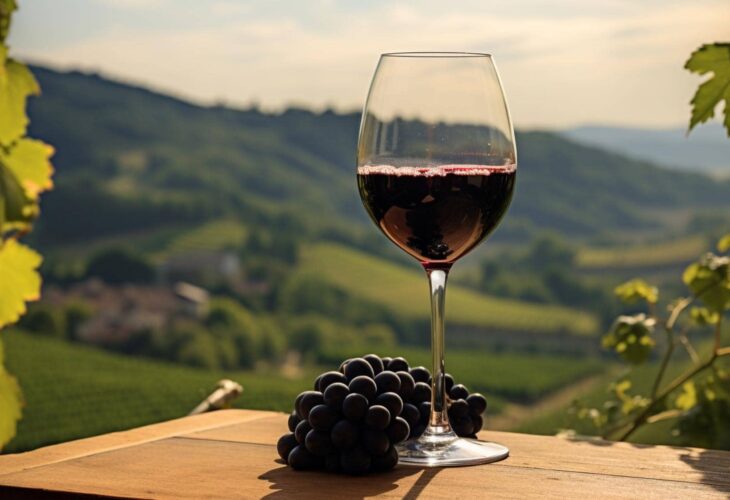Cost of Living in Serbia
December 15, 2024

The tradition of wine consumption and grape cultivation is deeply rooted in Serbia, as evidenced by archaeological findings in Sirmium and other sites, where wine amphorae dating back to ancient times have been discovered. Historical records indicate that Roman Emperor Domitian imposed a legal monopoly on vine planting, allowing only select growers to plant quality vines. When Roman Emperor Marcus Aurelius, born in the Sirmium region, came to power, vineyards were planted on the slopes of Fruška Gora, then known as Alma Mons, marking the beginning of Serbian viticulture with a history spanning over a thousand years.
Serious development in viticulture began during the formation of the Serbian state, particularly during the reign of the bohemian Nemanjić dynasty from the 11th to the late 14th century. They paid special attention to the culture of grape cultivation. The medieval Serbian fondness for wines was not only celebrated in folk songs about heroes like Marko Kraljević but was also documented by Zaharije Orfelin in the 18th century. In his “Experienced Cellarman,” he noted that the best wines were from monasteries, particularly praising Karlovac’s black wine and Schiller.
Serbia was once the most significant wine producer in Europe during that time, and Srem’s vineyards were among the oldest. Karlovci gained fame for their wines, which were consumed across Europe.
In contemporary Serbia, the situation remains unchanged. The wine cellars in Karlovac and Irig provide an authentic experience for visitors worldwide. They were built after World War I as caverns with wooden vaults, using exclusively wooden barrels for fermentation and aging. Karlovci, renowned for their special wines Ausbruh and Bermet, revived the production of these wines in the 1990s, preserving winemaking technology as a well-guarded secret within the Karlovac families.
Experts worldwide have recognized this region as a unique wine experience. White wines from Vojvodina, depending on the variety, range from light greenish to pale yellow, are lighter, moderately alcoholic, and mostly dry.
Notable Vojvodina white grape varieties include Italian and Rhine Riesling, Sauvignon, Chardonnay, as well as indigenous varieties like Sira, Neoplanta, and Tamjanika. Among red wines, Pinot Noir, Blaufränkisch, Game Noir, Cabernet Sauvignon, Merlot, and Prokupac are highly regarded.
Fortunately, the tradition of Serbian winemaking has seen a resurgence in wine tourism in the past decade, leading to the opening of many wineries. Here are some notable ones:
1. Podrum Radovanović (Krnjevo, Šumadija): Known for its legendary Cabernet, Podrum Radovanović was named the best wine in 2020. The winery, established in 1990 by Miodrag Mija Radovanović, focuses on creating high-quality wines, including Cabernet Sauvignon, Cabernet Franc, Prokupac, Riesling, Chardonnay, Sauvignon Blanc, Pinot Grigio.
2. Vinarija Kovačević (Irig, Fruška Gora): Founded in 2001, Vinarija Kovačević has been producing top-notch wines under the guidance of Miroslav Kovačević. With numerous awards, the winery continually combines traditional knowledge with new technologies, producing a wide range of high-quality wines.
3. Vinarija Zvonko Bogdan (Palić, Bačka): Named after the famous folk singer Zvonko Bogdan, this winery is known for its unique tasting rooms, a large restaurant reflecting the cultural richness of Subotica and Palić, and a stunning view of well-maintained vineyards.
4. Vinarija Erdevik 1826 (Erdevik, Fruška Gora): Located in the village of Erdevik, Vinarija Erdevik boasts a rich history dating back to Roman times. It cultivates varieties like Chardonnay, Cabernet, Merlot, White Sauvignon, and Shiraz.
5. Vino Budimir (Aleksandrovac, Župa): Situated in Aleksandrovačka Župa, Vinarija Budimir relies on the knowledge and experience passed down through generations, cultivating local varieties such as Tamjanika and Prokupac.
Serbia is a country that adores wines and boasts an exceptionally developed wine culture. Not only were the Nemanjić dynasty dangerous wine enthusiasts and somewhat vintners, but also King Alexander Karađorđević, a wine lover, founded the royal winery in Topola in 1931.
The story dates back to King Alexander’s wedding to the Romanian Princess Maria during the Kingdom of Serbs, Croats, and Slovenes. It was customary for the people to give the king a horse or a saber as a wedding gift, but a precedent was set, and the king received an unusual present. Knowing their king’s love for wine, they gifted him three barrels of wine from each republic: one from the Serbs, the second from the Croats, and the third from the Slovenes.
The initial verses of each nation’s anthem were inscribed on them: Serbian “Bože pravde,” Croatian “Lijepa naša,” and Slovenian “Naprej, zastava slave.” Each republic produced its wine in barrels made of dry Slavonian oak. Since the initial agreement was for the barrels to be of the same size, it remains unknown how the Croats sent the largest one.
Today, the royal winery in Topola has been transformed into a museum where original paintings of the king and queen during the grape harvest can be seen. It houses a hydraulic press from 1931 imported from France, as well as pumps for wine transfer, filters from a well-known Austrian company, corking machines, and fillers. In the museum space, there is a chair from King Alexander’s castle, “Lovački dom,” in Han Pijesak, handcrafted in walnut wood.
The wine from that period holds special value, with a total of 450 bottles of the highest-quality black and white grape varieties, dating from 1921 to 1941, stored in a special area behind bars and under lock and key. The bottles are sealed with wax, and these wines can still be consumed today. When the Karađorđević family returned to Serbia, one bottle was opened, and experts claim that this wine is like a time machine, with a taste as if it’s not from our region, given the significant climate changes since then.
Throughout its history of viticulture up to the present day, Serbia has proven to be more than just a land of plums and brandy; it is a serious producer of “biblical drops.”

Leave Your Comment